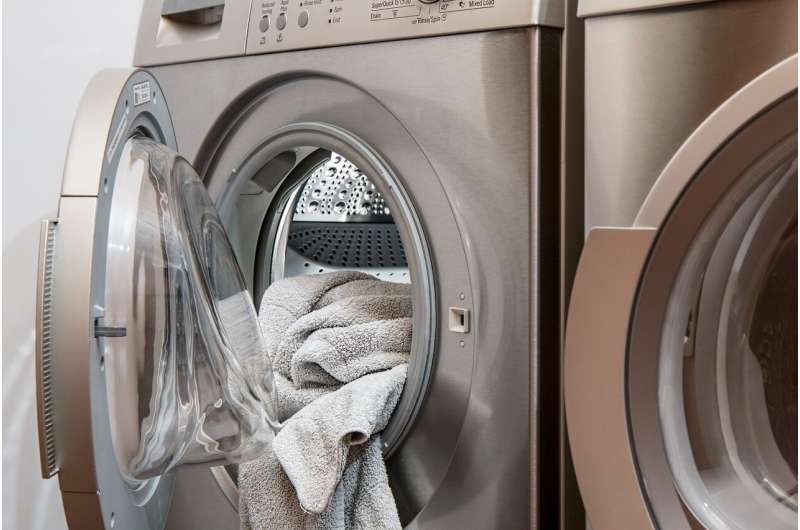This article has been reviewed according to Science X's editorial process and policies. Editors have highlighted the following attributes while ensuring the content's credibility:
fact-checked
peer-reviewed publication
trusted source
proofread
Marketers can manage 'feature creep' so consumers feel less intimidated by too many features in a product

Wifi-enabled washing machines. Voice-controlled microwaves. App-enabled TVs, vacuum cleaners, and even window blinds you can control from the comfort of your couch.
Many of the technological features now included in everyday products are useful and accessible. But research has shown that having too many can overwhelm potential buyers, making them less likely to make a purchase.
In recent research, Wayne Hoyer, marketing professor and James L. Bayless/William S. Farrish Fund Chair for Free Enterprise at Texas McCombs, digs into the phenomenon of "feature creep" and its impact on consumer sentiment. His findings might help companies strike the right balance as they design new products—or more effectively market ones that are feature-rich. "How Product Complexity Affects Consumer Adoption of New Products: The Role of Feature Heterogeneity and Interrelatedness" is published in the Journal of the Academy of Marketing Science.
"Traditionally, marketers and researchers addressing the topic of product complexity have only looked at the number of features," Hoyer says. He and co-researchers Andreas Fürst and Nina Pecornik, both of the Universität of Erlangen-Nürnberg in Germany, examined not only the number of features but also the relationships among them.
The team looked at two very different dimensions of complexity in a consumer tech product.
- Heterogeneity: how similar or dissimilar the features are. A highly heterogeneous product would be a smart home system that controls dissimilar features, such as floor heating, the refrigerator and television.
- Interrelatedness: how functionally connected they are, as with a smart home system that automatically closes the blinds and fires up the audio system when the television gets turned on.
How do each of these dimensions affect consumers' expectations about how capably a product will perform and how easy it will be to use—and thus, how likely they will be to buy it?
To find out, the researchers asked a total of 1,300 people in four experiments to evaluate and rank two different types of products—smart home systems and smartphones—under various scenarios. They ranked each product on a scale from 1 to 7, with 1 representing the lowest or least favorable response. They also ranked their purchase intentions.
Unsurprisingly, the team found that the participants were more likely to buy a product if they thought it would be both capable and usable. But several factors influenced those judgments:
More useful but less user-friendly. The more features a product had, the more consumers expected it to be capable—but the less they expected it to be easy to use.
More complex, less usable. The less similar and the more interrelated the features were, the harder consumers thought a product would be to operate.
For example, participants in the smart home group ranked rated usability at 3.56 when a system had a lot of features that were not very alike. That ranking improved to 4.13 when the features were very similar. The effect was true for smartphones, as well.
Related features, better performance. When features were highly interrelated, consumers expected a product to be more capable. High levels of heterogeneity, on the other hand, had the opposite effect.
The reason, a separate experiment found, is that they don't trust that products with highly dissimilar features will perform as promised.
"The number of product features is still very important," Hoyer says. "Marketers just also need to consider heterogeneity and interrelatedness. Our research clearly shows that these two dimensions are very important in determining product complexity and how that affects the consumer."
The big takeaway for companies and marketers, he says, is that they can boost sales by emphasizing that a product's features are interrelated, thereby promoting expectations that it will work well. They should deemphasize dissimilar features, so that consumers don't think the product will be hard to operate.
As for product developers, they should temper the desire to add as many new features as possible by ensuring that those features have plenty of functional connectivity that adds value for the consumer. Says Hoyer, "It's not really that tricky."
More information: Andreas Fürst et al, How product complexity affects consumer adoption of new products: The role of feature heterogeneity and interrelatedness, Journal of the Academy of Marketing Science (2023). DOI: 10.1007/s11747-023-00933-7
Journal information: Journal of the Academy of Marketing Science
Provided by University of Texas at Austin





















